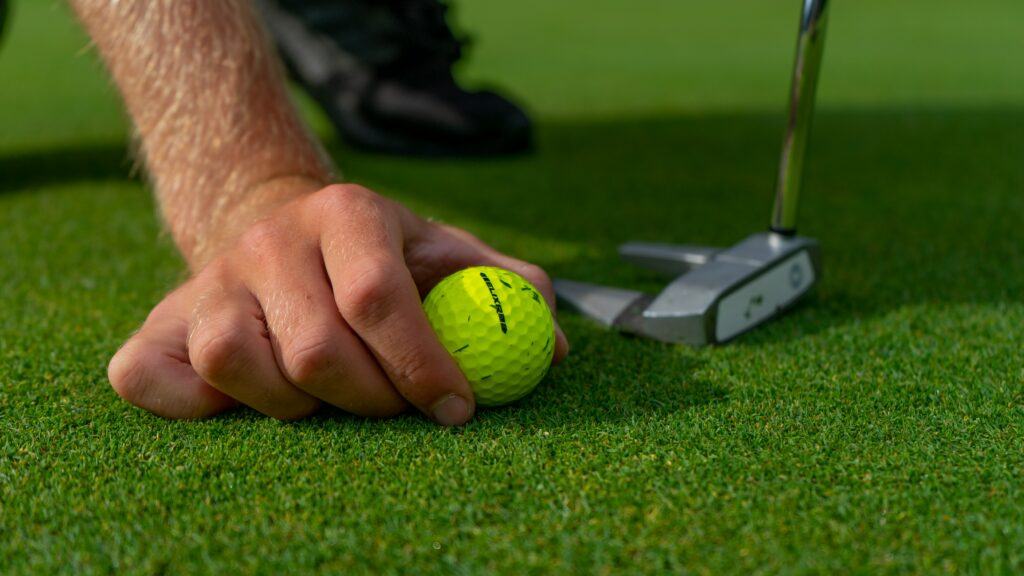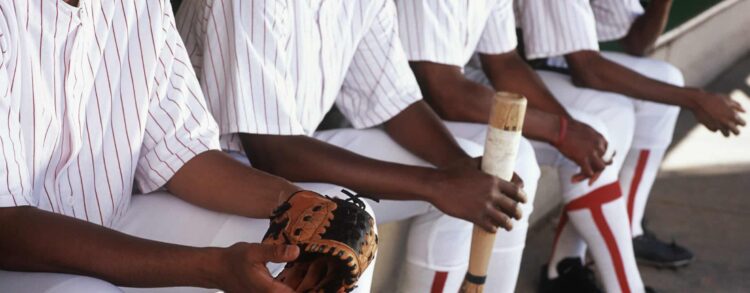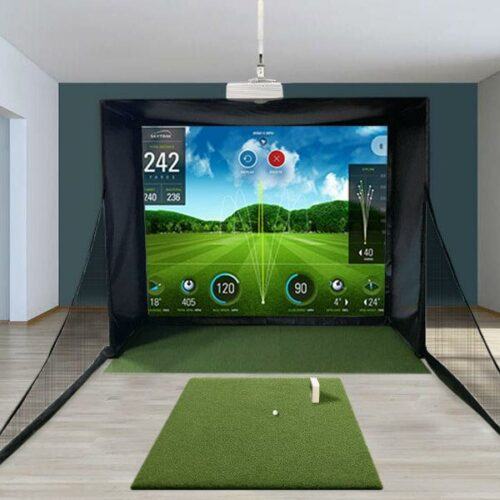Individual golfers have personal preferences on swings, distance, or feel of an ideal golf ball. Some balls have deliberate deformations in the core that delivers high spins on every shot. To play golf, you must know which type of golf ball is suitable and in what circumstances.
Moreover, similar to picking the right golf clubs, the balls have several differences. Here are some of the significant differences between soft and hard golf balls that you need to note.
The Differences
Before technology affected golfing equipment, the characteristic flight of a golf ball relied on each layer’s property and not the hardness or softness of the cover. However, through the years, innovative ideas in golf balls make it hard to spot remarkable differences between a hard and a soft golf ball. Golfers see innovations in golf balls that require designs that help maintain spins and distance every golfer cherish.
This section will take you through the historic, innovative, and current differences between soft and hard balls.
Historical Differences
For most of the 20th Century, two types of golf balls were available. The Balata golf balls which were made with a soft cover to promote the spin on the pitch using a short iron. The other alternative was the hardcover designed for distance and gave a little iron spin on the green.
The Balata golf balls were popular in the tour industry especially among low handicappers because of their spin, and ease of control when using them on the green.

Innovation and the Differences
As we move into the 21st Century, golf ball makers started using various materials to combine the Balata spinning property and hardcover golf balls’ characteristics. Technology revealed that adding layers to a golf ball put in place both properties of soft and hardcover balls. However, this largely relied on the swing of the golfer
Existing Differences Today
Advanced technology creates new and probably better innovations in golf balls, pushing the hard golf balls to near extinction. The innovations are slowly changing the golf ball market to a comparison between cheap and expensive. The costing differences are mainly due to the materials that make up the core and the mantle. The other factor bringing in the distinctions is the feeling you get with every shot due to the several layers on the golf ball, thus increasing their cost.
A good example is the feeling you get after hitting a four-layered golf ball off the driver. The same ball will feel soft when you take it off the green because of the varying club head velocity.

Hard Golf Ball vs. Soft Golf Ball in Detail
The visible differences between the two golf balls go beyond the brand name. The layers and different coatings on the golf balls affect the spin and durability of the ball. These two features are determinants of your swing score. What’s more?
Features of the Soft Golf Ball
- The outer cover is made of urethane with a rubbery feel. The ball gives a soft clicking sound that echoes after you whack it.
- The ball gives more spins that make more of the hooks and slicing tendencies.
- They have a soft exterior cover. Beginners will not like the soft golf ball they need to stock replacements. The cost of replacement could stretch a beginner’s budget.
- They have several layers on the ball which give them the soft feel that maximizes control and leaves you with a soft touch.
Features of the Hard Golf Balls
- Their outer covers are made of Surlyn Ionomer that behaves like plastic. When you strike a hard golf ball, you will hear a sharp and short click.
- When struck, it generates fewer spins in comparison to the soft golf ball.
- Their durability is credited to the hard-exterior surface that covers the core. Beginner golfers will be happy to use the hard golf balls because of their durability.
- The hard golf versions have two pieces making up its construction, i.e., the inner core and an outside layer that maximizes control. However, even with a hard ball, new players still need to perfect their skills to become professionals.
- The hard golf balls can withstand the constant hitting through trials. On the other hand, the soft golf balls will frustrate you because of the uncontrollable flight and spin. Nevertheless, experienced golfers always seek their drives by using the soft golf balls regardless of their cost.
- The hard golf balls are not meant for range balls because, in comparison, range golf balls are as hard as rocks. However, they experience more wear and tear. You can imagine the number of times the golf ball is hit in its entire lifetime.

How to Find the Right Golf Ball?
Do you feel there is a golf ball that will improve your handicap? Maybe changing your golf ball type to hard or soft may give you hope in improving your golf experience? Some golfers will choose a certain brand and never look another way.
However, beginners might be wondering why they need to go for the high-end softballs when all they need is to learn the game. Unfortunately, the argument of using quality equipment still holds even for beginners. However, for a beginner, hard golf balls will aid you pushing you to love the game. You will also enjoy their durability.
So, when it is time to choose your best golf ball, try new different balls on golf courses that you are familiar with. Test the ball of choice on holes you have played on before. Through rigorous testing, you will understand the usability, stability, distance, and control your ball of choice has on your golf game.
When choosing the right kind of ball, the other factor depends on your spending power and the objectives you have in a golf game. You need to understand the characteristics of the golf ball, especially when playing on the green.
6 Things You Need to Know About Golf Balls
A golf ball is not only hard or soft. You have more to learn about golf balls including factors such as construction, dimples, compression, and spin. With several golf balls already in the market, each have their capabilities and technology, making the purchase decisions a challenge.
To be ahead of everyone, here are some facts to know about golf balls.
Construction
Outer construction of a typical golf ball is identified as five types. Each of these has a particular role in your style of play.
One-piece construction: this one is preferred for driving ranges and insane golf courses. They take a solid spherical shape made of molded Surlyn with dimples. They are affordable and cover shorter distances because of their low compression.
Two-piece construction: Two-piece golf balls are designed for distance and durability. The outer cover encloses a solid core giving the golf ball a firm feel and can cover more distance at feel and control.
Three-piece construction: another layer of enhanced liquid rubber surrounds the rubber core. The two are further cased inside a soft synthetic plastic cover. This golf ball construction gives professional golfers more spin and has better control over the greens.
Four-piece Construction: When the two-piece and three-piece construction is combined to form a four-piece golf ball, you will experience both distance and feel. The ball has a soft rubber core for added distance, which is also inside two separates that controls the spin. The soft feel you get from this ball is coming from the thinnest layer made of urethane cover.
Five-piece construction: five-piece construction golf balls use the latest technology to optimize performance in five different areas like long irons, short irons, driving, short wedge, and mid-iron shots.
Dimples
Dimples reduce drag and add lift by creating thin air turbulence clinging on the ball’s surface, pushing it further. The overall effect on the ball is to decrease its wake and drag. If you hit a smooth golf ball it will only travel half the distance a golf ball with dimples would do.
If you impart backspin on the ball, the club generates an upward lift, and the dimples come in to optimize the lift’s power. Manufacturers claim that dimples also cut back on sidespin to maintain a straight shot.
Most golf balls have between 250 and 500 dimples with varying depths. The smallest change in the depth produces such considerable differences in the balls’ direction and the distance it covers.
Compression
Compression is a measure of how much the golf ball squashes or compresses against the clubface. The more the compression, the further the ball travels due to the golf club’s bouncing effect. Most of the golf clubs have compression ranges between 40 and 100.
Balls with low compression have a soft texture and are more compressible and suitable for beginners. Handicap players with slow swing speed can use the low compression balls to cover more distance.
High compressions balls are tough and are the preferences among experienced golfers. They have a good speed and can command a greater distance and ball control. If you have a high swing speed, your ball should be one with low compression value but at your best performance.
During the cold weather, a ball with high compression becomes heavy. Therefore, you should opt for a golf ball with low compression to experience more feel. Most golf ball makers do not talk about the compression rating. They prefer to talk about the ball’s feel.

Feel
You will feel a golf ball when you look at its construction. Others feel soft while others are firm on the clubface. Solid rubber cores will give a rigid feel, and most are the two-piece golf balls. Such balls will serve you for a long and give a reasonable distance.
A golf ball with a soft rubber core inside a soft urethane gives that soft feel and can either be the three to five-piece golf balls. The soft rubber balls may not be as durable but offer the best control and spin on the greens.
Not all soft golf balls have low compression because some are made of multiple layers giving you the impression of a softball.
Spin
A golf ball is either a low, mid, or a high spin, which translates to the club’s backspin. Balls have different spins, such as:
Low spin: tend to reduce the sidespin on your shots, causing a straight course and more distance coverage. This type of ball is for a golfer who enjoys slicing the ball but struggles to get the right distance.
Mid spin: take the best distance between low spin balls and high spin balls to attract a wide range of golfers and are suitable for standard golfing conditions.
High spin: they are meant to spin more when airborne. They travel for longer distances with more control when on the greens.
Brands and Philosophies
Every brand maker will give you an impression of their products, you should only listen to what they say, and you need to test or use a product and make the final judgment on it. Golf ball manufacturers will always want you to stick to their products, whether they give you the kind of functions you are looking for, or not.

FAQs
- Should I use Hard or Soft Golf Balls?
Some golf balls have a soft feel, while others produce a hard feel. Depending on your golfing experience, you go for a ball that fits your touch and understanding. Hard is appropriate for beginners while the soft ones suit professional golfers.
- Do Hard, or Soft Golf Balls go further?
The idea behind using a low compression golf ball is the lack of speed coming from the golfer. Regardless of the type of golf ball in use, your swing’s speed of sending the ball further matters.
- Are Soft Balls Good for Beginners?
The low compression rate that the softballs have is good for a beginner because of the tendency to compress the ball more than high compression balls. However, the soft golf balls are easy to control when playing on the greens.
Conclusion
Some golfers see that the technical advancements in golf ball technology may pose a threat to the way golf is played. However, you can use a ball that favors your skills and decide to ignore details such as control and distance. Whether you choose the soft or hard golf ball, control, consistency, and distance remain a suitable golf ball’s determinant characteristic.














I really enjoyed reading your article ‘What Is The Difference Between Soft or Hard Golf Balls’ and learned a lot about golf balls from it. This is my first knowing that there are both hard and soft gift balls as I’m not an avid golf player, but I’m sure your article will be especially useful when the time comes to pick the right ball for playing.
Hello, Beesean, and thank you.
Thank you for your kind words.
Great to hear about your benefit of the article too.
And you are right; other factors have much more useful to help you run faster.
Hello there, growing up as a sports person, I really like the golf game because my dad has always played the game, and I was always n playing until we moved out of the states. However, to date, I really didn’t know there was a soft or hard ball until I played it myself about two weeks ago.
Hello, Justin, and thank you.
Thank you for your kind words.
Great to hear about your benefit of the article too.
Don’t hesitate to contact me if I can help you with anything else or if you have any questions.
This article is like a college course on golf balls. I am embarrassed to say that I generally choose golf balls by brand name. After reading your article, I realize that I need to look for the best for me for the golf balls. I need the ball that is easiest to control off the tee. I will reread your article and write down a few questions to ask the next time I am at the pro shop.
Hello, Anastazja, and thank you.
Thank you for your kind words.
Great to hear about your benefit of the article too.
Don’t hesitate to contact me if I can help you with anything else or if you have any questions.
Thank you so much for sharing here. Though I have an amateur knowledge of golf and all involved in the sport, what you have shared here is amazing to see, and thank you so much for sharing with us. Really fancy it all here and everything there with it. Thanks so much for sharing the information too
Hello, Liza, and thank you.
Thank you for your kind words.
Great to hear about your benefit of the article too.
After I have read your comment, I believe you could feel this article interesting. There are some excellent tips and guides about searching which ball is best for you.
Don’t hesitate to contact me if I can help you with anything else or if you have any questions.